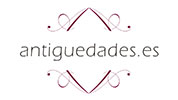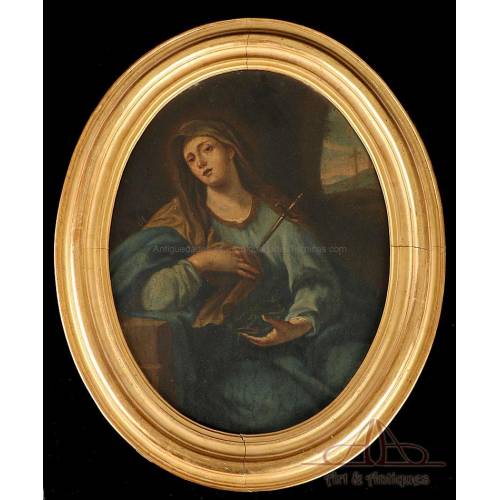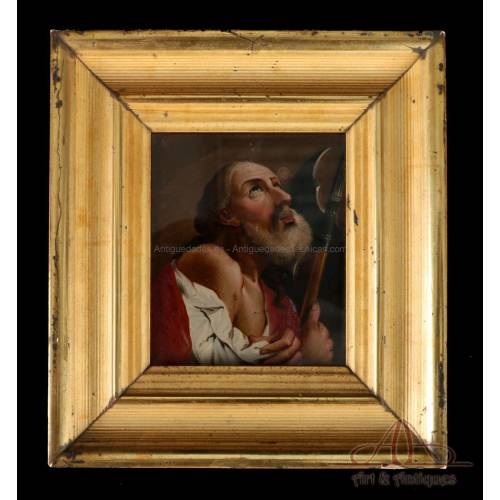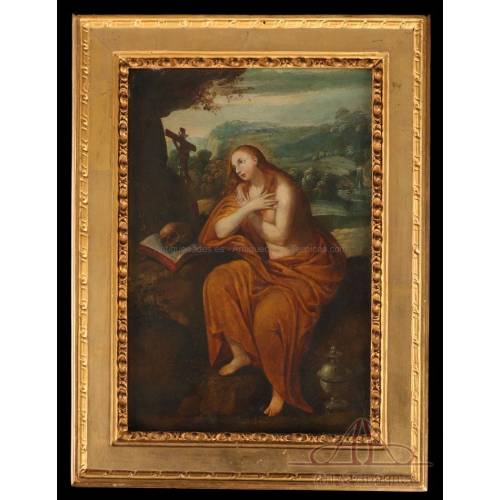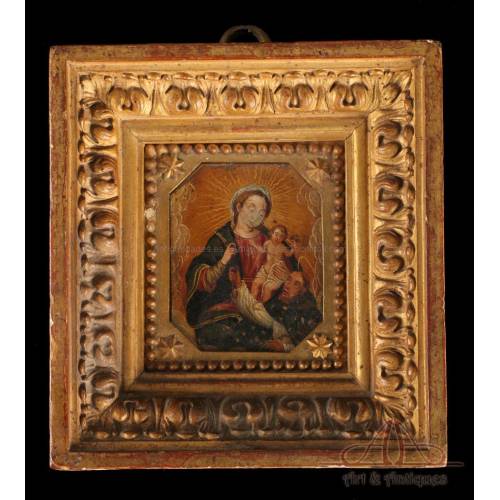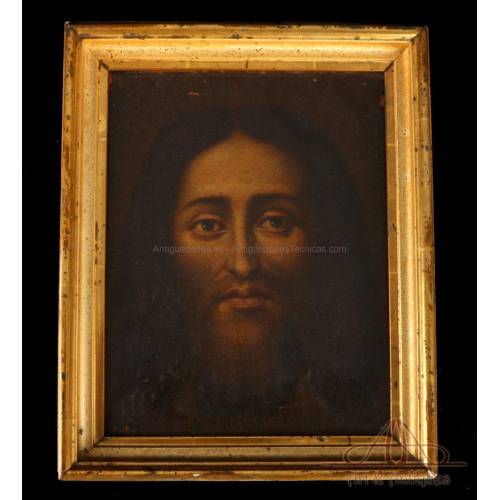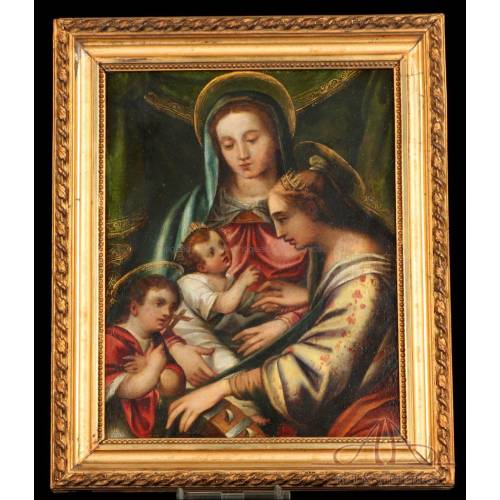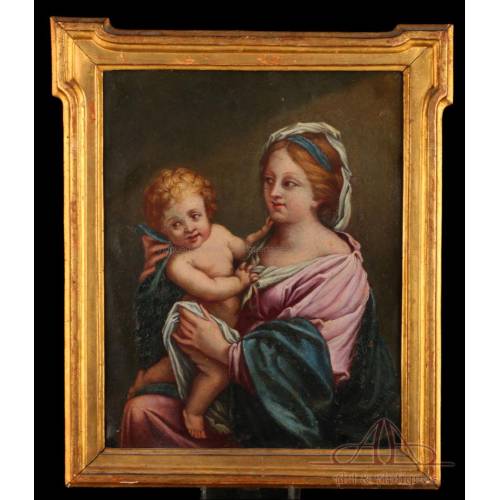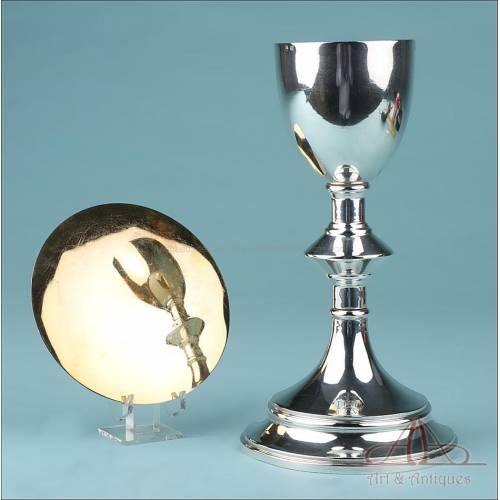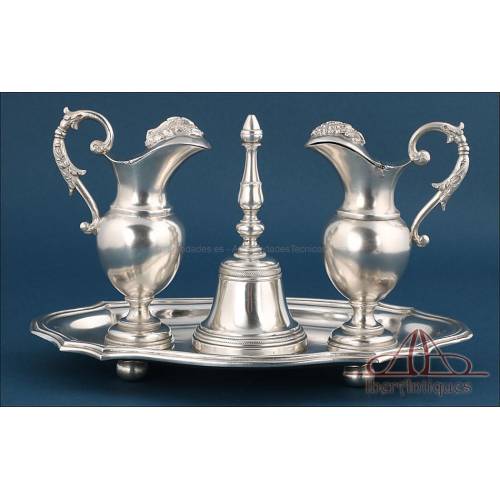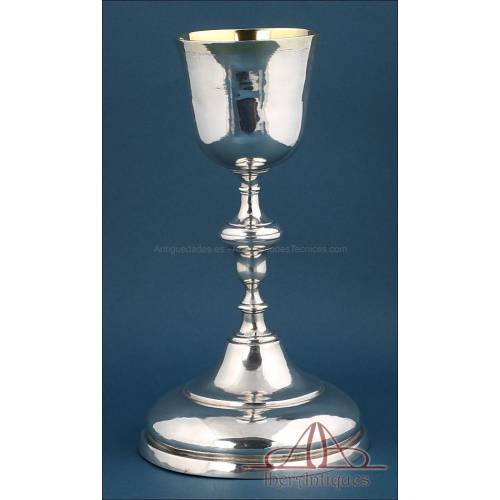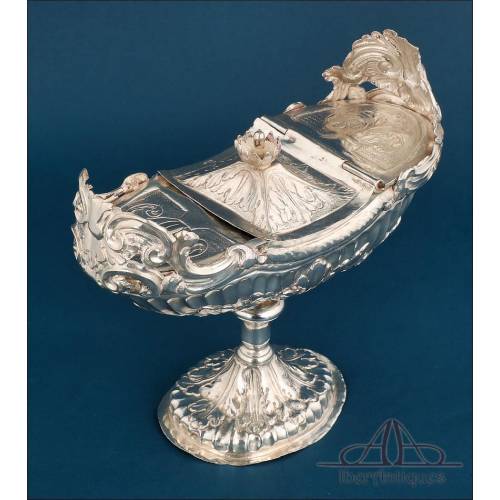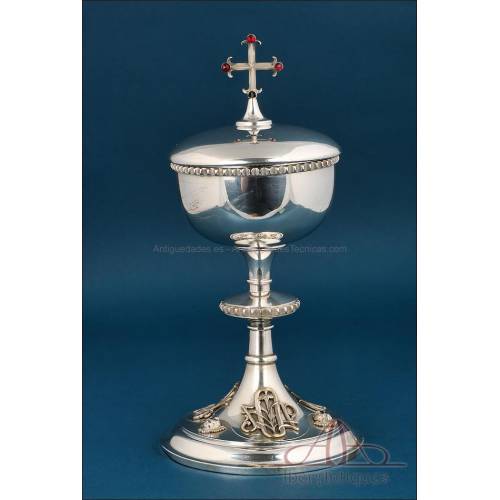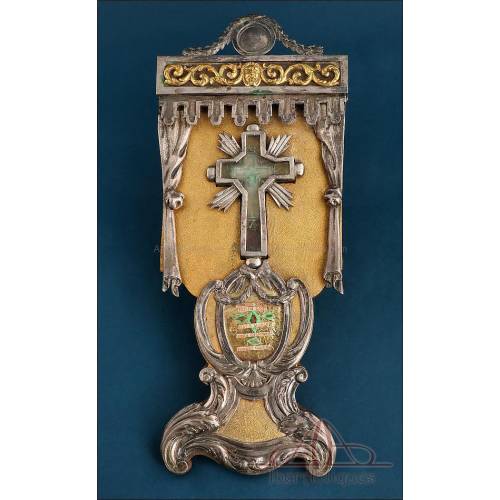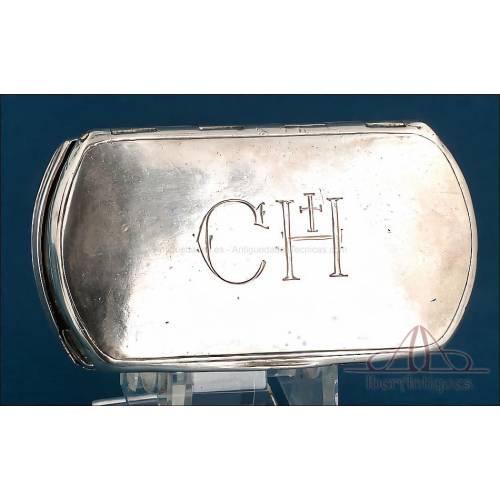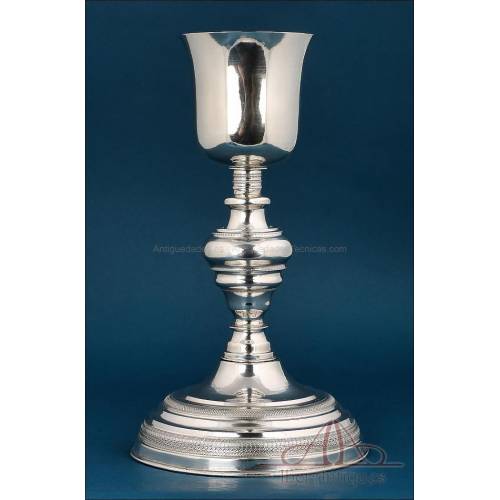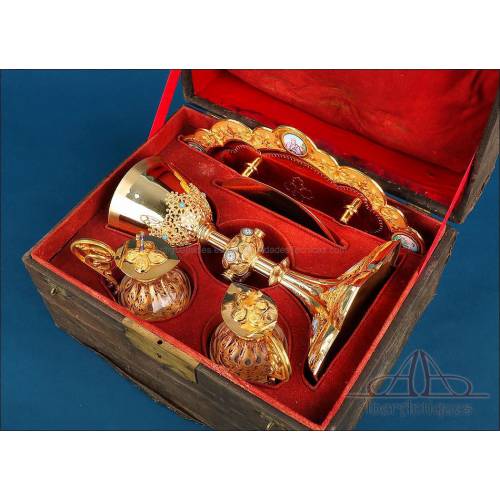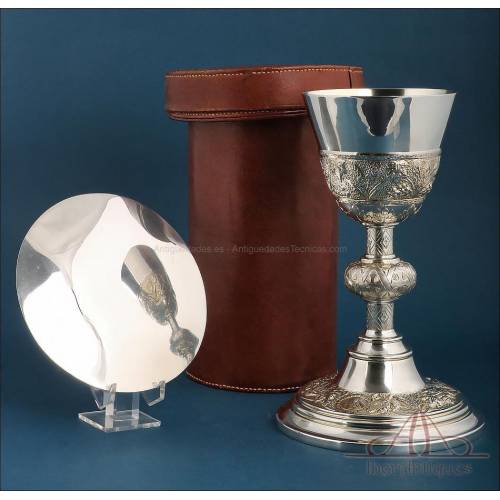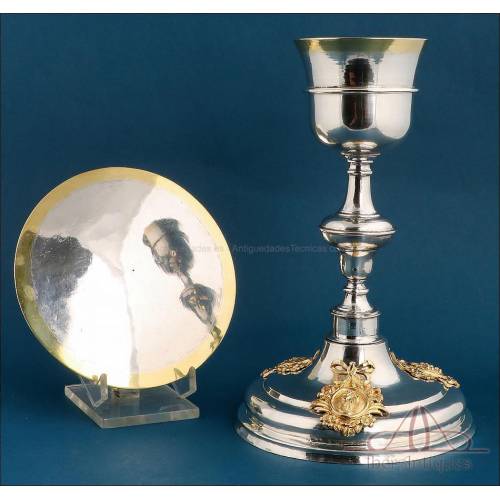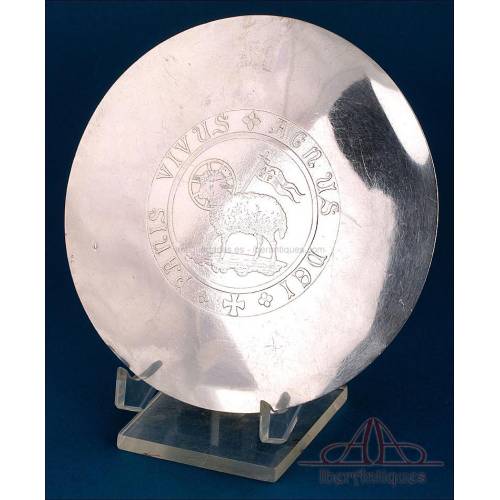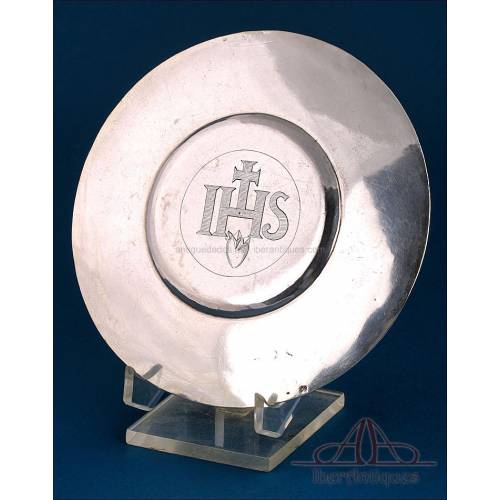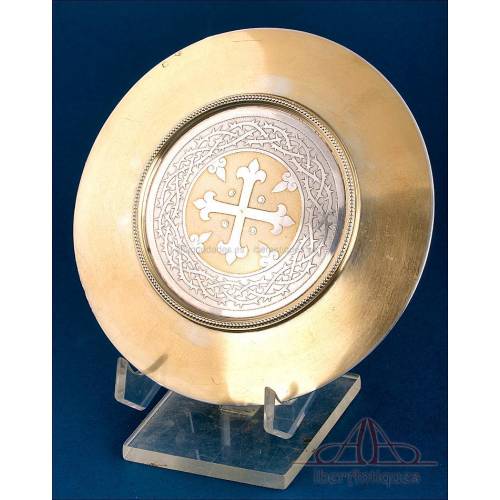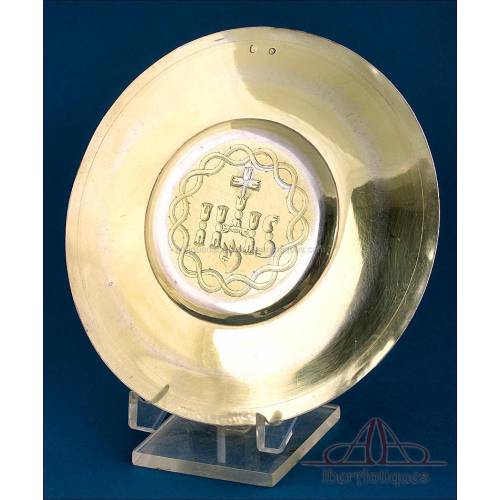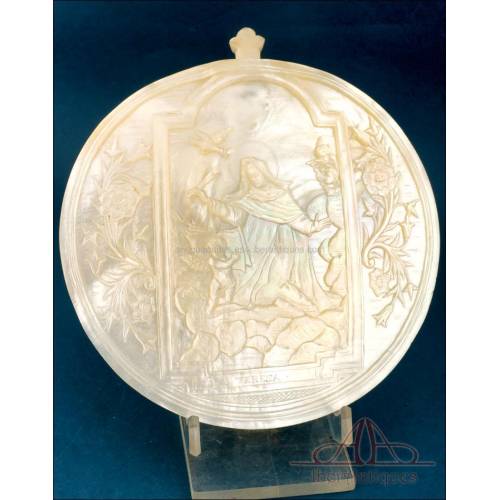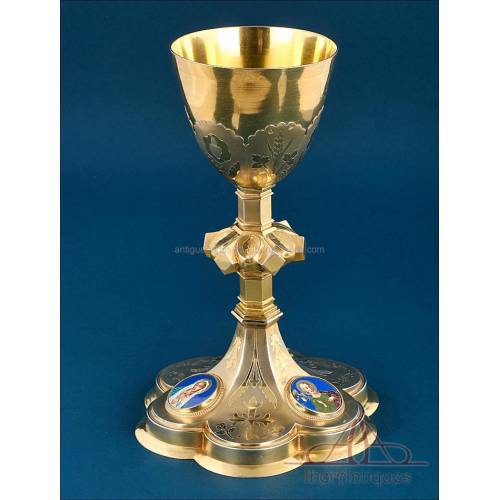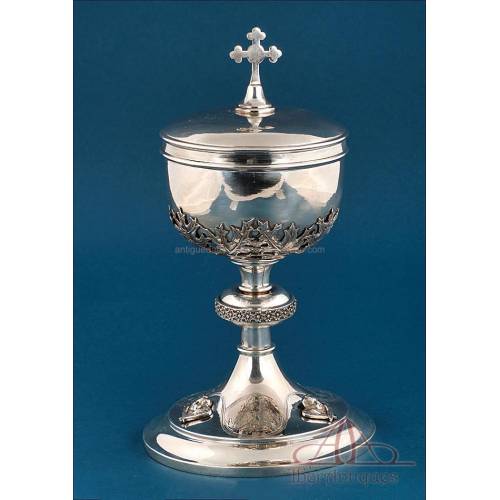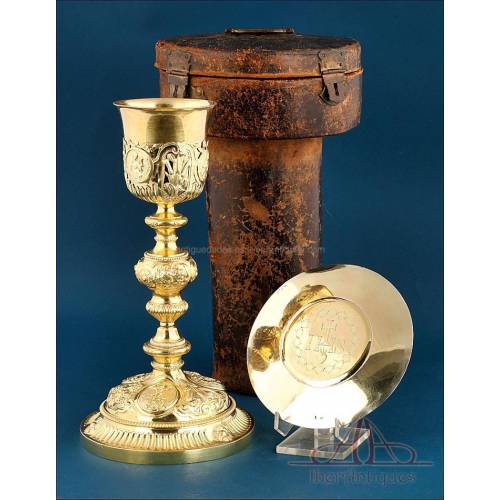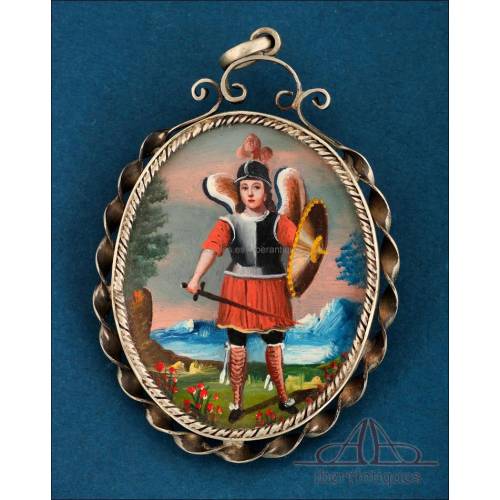E-278
Antique French barroque chalice. Gilt silver. Paris, France, 1819-1838
Antique French gilt silver chalice with religious medallions and engraved paten. Paris, 18191838. Very good condition.
Antique French barroque chalice in gilt silver. Paris, France, 1819–1838
Beautiful French chalice in gilt silver accompanied by a paten, both richly decorated with religious and symbolic motifs, typical of early 19th-century liturgical silverwork. The chalice bears official Paris hallmarks used between 1819 and 1838, clearly visible on the base and on the rim of the cup. These marks not only allow us to date the piece with precision but also confirm its origin and the noble materials used in its execution. This is a carefully crafted set, created for liturgical use, with a design that is sober yet deeply symbolic, in line with the post-Napoleonic period in France.
The base of the chalice is wide and solid, adorned with three oval medallions representing the Three Theological Virtues. Faith is shown with a cross, Hope with an anchor, and Charity with two children, one in her arms and another at her feet, in a tender and expressive scene. These medallions are separated by elegant vegetal reliefs featuring grape clusters, wheat sheaves, and reeds, all symbols of the Eucharist, sacrifice, and eternal life. The base is completed by a border decorated with vertical fluting and floral reliefs, adding visual rhythm and balance to the piece.
The knop of the chalice, bulbous and in the form of a vegetal pod, echoes the same symbolic language, with wheat, grapes, and reeds sculpted within pointed cartouches. These motifs connect the structure visually and reinforce the Eucharistic theme, while also creating a smooth transition between the base and the cup.
The cup rises gracefully from the knop and is fully gilded on the inside, with a brilliant finish that reflects light warmly. On the exterior, three medallions are evenly spaced and separated by the same vegetal motifs seen throughout the chalice. The first medallion depicts Christ crucified, but not in death, it shows him solemnly ascending toward heaven in a powerful scene of spiritual elevation. The second medallion portrays the Virgin Mary as the Immaculate Conception, standing on the moon and crushing the serpent’s head with her heel, symbolizing triumph over evil. The third medallion shows the Holy Family: the Child Jesus with Mary and Joseph in an intimate, devotional scene representing love, unity, and the sacred home.
The chalice is in very good overall condition, with bright gilding and sharply defined reliefs. There are no visible signs of restoration or damage. Minor marks of age are limited to smooth surfaces and do not detract from the piece’s beauty or value.
The chalice is accompanied by a paten in silver, one side fully gilt and the other in white silver. At its center is an engraved IHS monogram, with a cross rising from the H and a flame issuing from a heart at the base, classic symbols of Jesus' name and the Sacred Heart. The paten bears two hallmarks, though they are worn and illegible. It too is in good condition, with light signs of use but no dents or structural issues.
This set is ideal for a priest or seminarian and can be reintegrated into liturgical use. It also makes a fine addition to any sacred art collection. With its harmonious proportions, deep symbolism, and historical significance, this is a liturgical piece of exceptional spiritual and artistic value.
Don’t miss the opportunity to acquire this beautiful Eucharistic set with strong iconographic richness and remarkable workmanship.
Measurements: 29.5 x 15.8 x 9 cm (11.61 x 6.22 x 3.54 in). Paten: Ø 15 cm (5.91 in). Weight: 623 g.
History of Religious Silverwork in France (1819–1838)
Between 1819 and 1838, France experienced a significant religious and artistic revival following the upheaval of the French Revolution and the Napoleonic Empire. The Bourbon Restoration and later the July Monarchy promoted a renewed interest in Catholic worship and the liturgical arts. Paris once again became a major center for the production of sacred silver and gold objects.
Parisian silver workshops, strictly regulated by hallmarking laws, produced chalices, monstrances, ciboria, and other liturgical items of exceptional artistic quality. Neobaroque and neoclassical styles blended with Gothic influences, creating well-balanced pieces rich in religious iconography. Eucharistic motifs such as wheat, grapes, and reeds, along with depictions of theological virtues and biblical scenes, became common decorative elements.
The chalice was undoubtedly one of the most important items in any liturgical set, not only for its sacramental role but also as a work of art. Pieces from this period show a careful balance between structural simplicity and iconographic richness, as seen in this example. Many were also offered as votive gifts, in gratitude for divine favors or as family donations, adding personal and devotional value to their religious significance.
Today, chalices like this are sought after by collectors, priests, museums, and sacred art enthusiasts, not only for their material value but for what they represent: a synthesis of faith, history, and beauty.
